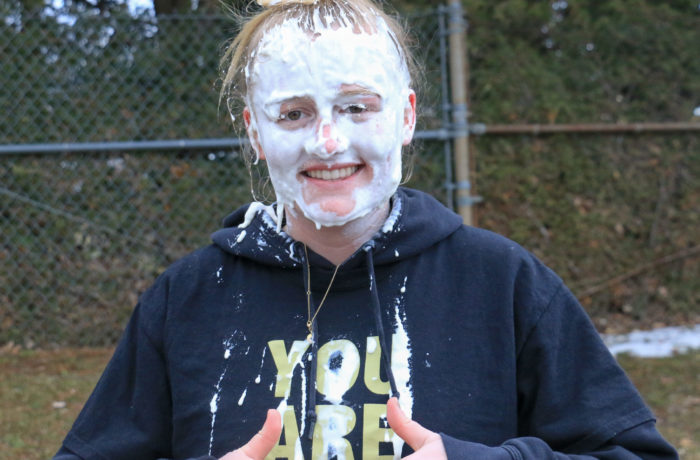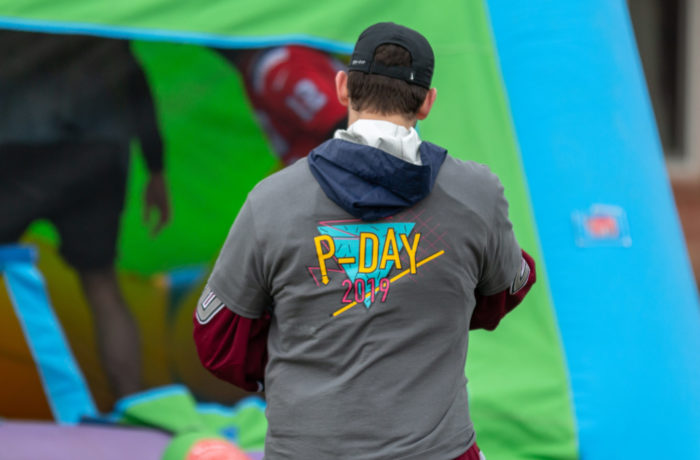By Sierra Case
Staff Writer
In the hands on program, Go Baby Go, students and professors work together to make the lives of children who struggle from limited mobility a little easier. Go Baby Go is a program in which students and professors take and modify battery-powered, motorized cars in order to fit the different specifications that each child’s disability demands. Go Baby Go provides children with these specially modified cars, which are tools that assist them in getting around.
Kickboards and PVC pipes are used to create structures that are placed according to where each child needs extra support. The cars can even be modified to change how the car accelerates. For children who lack the ability to press their foot down on the pedal, cars can be re-wired so they instead can switch a lever with their finger.
Mary Beth Doyle, an education professor here at St. Michael’s College, decided to implement Go Baby Go after discovering the program from the University of Delaware during her time teaching a special education course. She, along with Donna Bozzone, a biology professor, jump-started the program. Annie Ledue ’21 and Sarah Hunzeker ’21, who have been in the program for nearly a year, expressed how important and crucial Bozzone and Doyle have been to the success of the program. The two professors spent hours spreading the word on social media, putting ads in newspapers, and going door-to-door in an attempt to get this program started and acquire beatup cars to use for students to practice and learn on.
Bozzone and Doyle put in efforts to get funding in order to buy the cars, which are around $500 each, because they didn’t want the families who needed help to be prioritized based on income. They wanted each child to have an equal chance of getting a car. Three members of the board of trustees donated money and tools to help get the programmed started. Then, they were able to acquire companies, such as Harley Davidson and Al’s French Fries to sponsor the cars. As a result, families who don’t have enough money to pay for these vehicles to help their children, are receiving cars.
Ledue and Hunzeker both got involved with this program without any knowledge or ability to modify a car. “Sarah and I came in not really know
ing how to do anything,” said Ledue.
“We had never held power tools before,” Hunzeker said.
Lou Bresee, a retired engineer, and Bob Dana, a long time friend of Doyle, volunteered to teach the students the skills and methods that are needed to modify the cars for each children’s different needs. “It was nice to have people who could show us how to do a small part of it and then have the freedom to, not only figure out how to do that for ourselves, but also apply it in different ways than what we were initially taught,” Hunzeker said.
This program gives students the chance to become active participants in the modification process. “When they get it and understand, it’s the Eureka moment,” said Bozzone. With the help of volunteers and the community, students are able to learn and apply their skills on their work, giving them that hands on experience.
The students fully immerse themselves in the program and the process and as a result, they are also able to develop a strong relationship with the child and their family. “Professor Doyle and Professor Bozzone have created this system where we meet with the families, sometimes with PTs as well, and first and foremost get to know the families,” Ledue said. With a strong connection, the professors and students are able to see the child’s progressions and share in their excitement. “One of my favorite things is the thrill on one of these little kids faces when they hit a button on their car and they just go,” said Bozzone. These vehicles give children the opportunity to do everyday activities that their disability greatly restricts them from doing. “How wonderful it is for a kid who can’t easily get around by themself to have a way to be able to get around, and to do it in style,” said Bozzone.
Hunzeker explained that as the child grows, adjustments and modifications need to be made to the car. The program continues to meet with the family to check up on and help the child even after they are given a car. They keep the tight bond and relationship with the child, which is extremely important. “The wonderful thing is that the job is never really done,” Ledue said.


